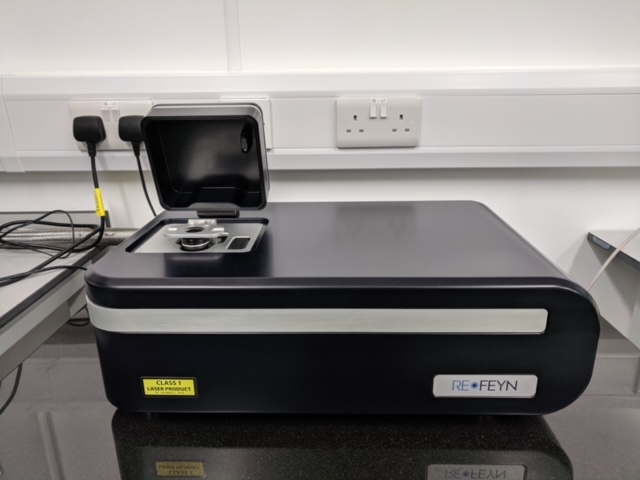Refeyn, a company that supplies benchtop mass photometry equipment won the award at a “Dragons Den” style pitching event, which took place at bioProcess UK, held online last month. They jointly won the award with FourPlus, a company that offers virtual reality technologies to the cell and gene therapy sector.
According to James Wilkinson, PhD, sales director, Refeyn’s technology was originally developed as an analytical tool for measuring the mass of proteins, DNA, and small viruses.
“Lots of people use size and hydrodynamic ratio as a measure of mass,” he says. “What’s unique about our method is that it measures mass directly.”
The company moved into gene and cell therapy manufacturing after being approached by a British adeno-associated virus (AAV) manufacturer who wanted to detect whether viral capsids were full or empty. “We hadn’t measured that previously, but we knew we’d be able to help,” he says.
The company, which is a spinout from Oxford University, easily distinguished between full capsids, which contain AAV product, and empty capsids in their laboratory. They presented their results at PepTalk in January 2020.
“It was back when we could still travel to conferences,” says Wilkinson. “I was on the plane back from San Diego, flying through Los Angeles, when I read that China had closed Hubei—an area the size of the U.K.’s population—due to a virus, and I thought, this isn’t good…”
Despite the pandemic, Refeyn demonstrated their technology to gene therapy companies through Q1 and Q2 of 2020. “We sold a number of systems into AAV companies off the back of these successful demonstrations,” Wilkinson says.
According to Wilkinson, their benchtop system uses small volumes of fluid pipetted onto a cover slip. It can test the mass of capsids, or other biological molecules, in sample volumes of only 10–20 microliters.
The company has started a collaboration funded by Innovate UK, the U.K.’s innovation agency, with U.K.’s Cell and Gene Therapy Catapult, to further enhance the performance of mass photometry in development and production of AAV vectors.






